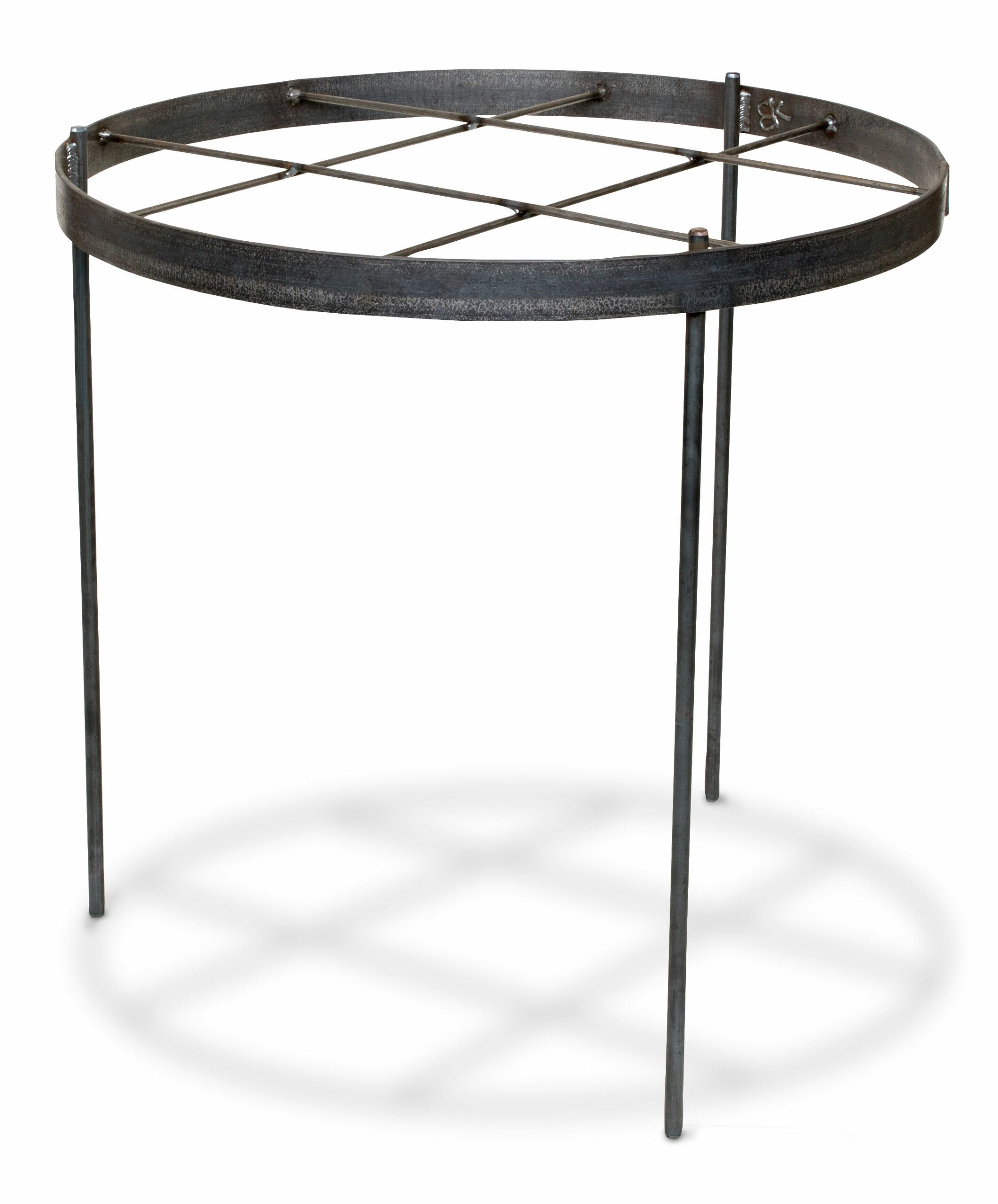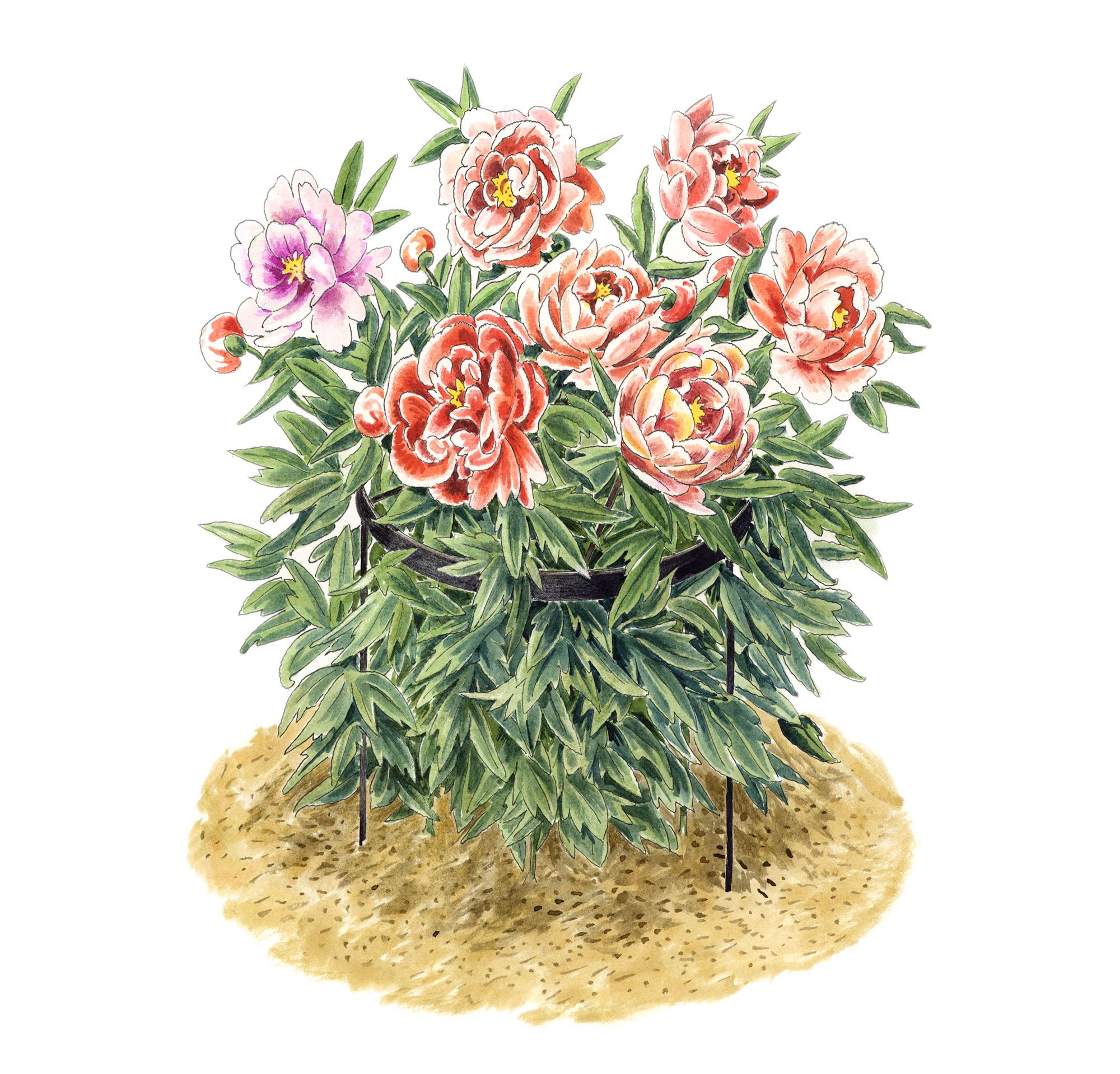Peonies are beloved for their lush, romantic blooms, but their heavy flowers often need support to stay upright and healthy. Staking keeps these stunning plants at their best by supporting their weight. This guide will explore peony support options, from traditional wire rings to hefty steel stakes favored by botanical gardens. We’ll cover how to choose, install, and maintain the right supports for your peonies.
Why Do You Need Peony Stakes?
Peonies, with their large, luxurious blooms, are a garden favorite. However, these beautiful flowers can become victims of their own weight. As the flowers grow larger and heavier, especially after rain, they tend to droop or snap at their stems. This is where peony stakes come in, providing the necessary support to keep your plants upright and healthy. Staking not only prevents damage to the plants but also improves air circulation, reducing the risk of fungal diseases. It keeps the blooms clean and visible, allowing you to fully appreciate their beauty.
Types of Peony Supports
There are several types of peony supports available, each with its own advantages. Let’s explore the most common options to help you choose the best support for your garden.
Traditional Wire Rings
Wire rings are a popular and affordable option for supporting peonies. These circular supports are typically made of coated metal wire and come in various sizes. They’re designed to be placed over young peony plants early in the growing season, allowing the foliage and stems to grow through the ring as the plant matures.
While wire rings are easy to use and relatively inexpensive, they may not provide sufficient support for larger peony varieties or plants in windy areas. They’re best suited for smaller peony plants or as supplementary support in combination with other staking methods.
Hefty Steel Supports
Hefty steel supports offer superior strength and durability for heavier peony species. These supports, favored by the New York Botanical Garden, are designed to withstand the weight of large peony blooms and harsh weather conditions.
Handsome and robust enough to leave out all year, steel supports can be sunk down to soil level and overwinter in place. A coat of spray paint can keep them rust-free and help them last for many growing seasons. While more expensive than wire rings, these sturdy supports are a worthwhile investment for serious peony enthusiasts.

DIY Stake Options
There are many DIY options for the creative gardener. These can range from repurposed materials like bamboo poles or tree branches to custom-built metal or wooden stakes. When creating your own stakes, use materials that are strong enough to support your peonies and weather-resistant to last multiple seasons. Ensure that any DIY support is smooth and won’t damage the plant’s stems or leaves.
How To Stake Peonies
Proper staking promotes the health and appearance of your peonies. Let’s explore the key aspects of staking, including timing, placement, and securing methods.
When To Install Stakes
Install stakes early in the growing season, ideally when peony shoots are about 6 inches tall. This allows the plant to grow naturally around the support, resulting in a more natural appearance. Early installation also minimizes the risk of damaging the plant’s root system.
Placement Techniques
Place stakes about 2–3 inches away from the plant’s center, ensuring they’re deep enough in the soil to provide stable support. For larger plants, use multiple stakes arranged in a circle around the plant. Adjust the height of your stakes to match the expected mature height of your peony variety.
Securing Peonies Without Damage
Use soft plant ties or twine to gently secure the peony stems to the stakes. Avoid tying too tightly, which can restrict growth or damage the stems. As the plant grows, add additional ties higher up the stake to provide continued support without constricting the plant.
You may need to adjust your staking strategy as your peonies grow. Add additional ties higher up the stake as the plant grows taller. Consider adding extra support branches for particularly heavy blooms. Adjust the stake height if your peonies grow taller than expected.
Maintaining Staked Peonies
Maintenance of peonies and their stakes keeps them healthy and beautiful throughout the growing season. Here are some seasonal care tips:
- Watering and inspecting regularly: Water at the base of the plant to avoid wetting the foliage and flowers. Regularly check ties and adjust as needed to prevent stem damage. If you notice any damaged or diseased foliage, remove it promptly.
- Overwintering and spring care: In many climates, it’s beneficial to leave stakes in place over winter. This approach marks the location of dormant peonies, reduces your spring workload, and minimizes soil disturbance around the plant. In early spring, apply a balanced fertilizer to promote healthy growth.
- Preparing stakes for the next season: Before the new growing season, inspect stakes for damage and replace them as needed. Clean and disinfect reusable stakes to prevent disease spread. If you’re using the same stakes as the past season, apply a fresh coat of paint or sealant to extend their life. Plan any necessary adjustments based on the previous year’s growth.
Troubleshooting Common Staking Issues
Even with careful planning, peony staking can sometimes present challenges. Here are solutions to common issues you might encounter:
- Dealing with heavy blooms: For peonies with particularly large or heavy blooms, use multiple stakes around the plant for distributed support. Employ a cage or grid system for all-around support. Consider disbudding some flowers to reduce overall weight.
- Adjusting for windy conditions: In areas prone to strong winds, use heavier, more robust stakes. Install stakes deeper in the ground for added stability. You can also create windbreaks with strategically placed shrubs or fences.
Our Conclusion
Proper staking helps you showcase the full beauty of peonies in your garden. From traditional wire rings to hefty steel supports favored by botanical gardens, there’s a staking solution for every peony gardener’s needs. The best peony stakes are those that provide reliable support while allowing the natural beauty of the flowers to shine.

